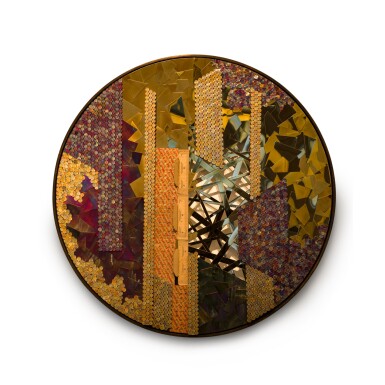Modern & Contemporary African Art | and CCA Lagos Benefit Auction
Modern & Contemporary African Art | and CCA Lagos Benefit Auction

Property Sold to Benefit The Centre for Contemporary Art, Lagos (CCA, Lagos)
Yaw Owusu
Heads And Tales
Lot Closed
March 22, 03:05 PM GMT
Estimate
10,000 - 15,000 GBP
Lot Details
Description
Yaw Owusu
Ghanaian
b.1992
Heads and Tales
Executed in 2021
US pennies, Ghana Pesewas, cardboard, stainless steel, aluminum composite
122.6 by 4cm., 48¼ by 1½in.
Donated by the artist and Gallery 1957
"In the early days of my career, Bisi helped me, on a very personal level, strengthen my narrative and create thoughtful dialogues around my work. It is indeed incredibly remarkable her effort, contribution, and vision for artists. This to me isn’t merely a way of supporting her vision, but it is an honour to contribute in this way."
Yaw Owusu creates sculptural installations that repurpose found objects, shifting the value of otherwise-worthless materials into things of beauty. Built from countless pieces of loose change known as “pesewa” coins, his work activates urgent questions around economic and political independence in contemporary Ghana. First introduced as an attempt to cure the countries economy’s inflation in 2007, these small copper coins have almost no value in today’s financial climate, enabling the artist to use them as a primary material. Typical of Owusu’s approach to working with local agencies to develop his work, the artist acquired the coins by negotiating with Ghana’s banks – a bureaucratic process that is as important to the artist’s practice as the final works.
Created as structural works that embrace the same organic qualities of their materials his sculptures have incorporated as much as twenty-four thousand coins, transforming under various conditions and processes. The bronzed coins undergo various natural and chemical treatments, using salt from the south coasts and vinegar from the mid and eastern regions to reveal their age and quality. They can appear fixed onto wooden panels, draped over walls or loosely hanging onto surfaces to form a camouflage, however they are anything but decorative displays of natural beauty. Instead, these installations are an expression of the artists reflections on the complex processes that demarcate Ghana’s social and political systems. Like the economy itself, the sculptures seem robust due to their dense façade, yet they are in flux and constant movement with their surroundings. The surfaces act both as protective layer of indestructible metal and an shiny foil made up of empty matter.
